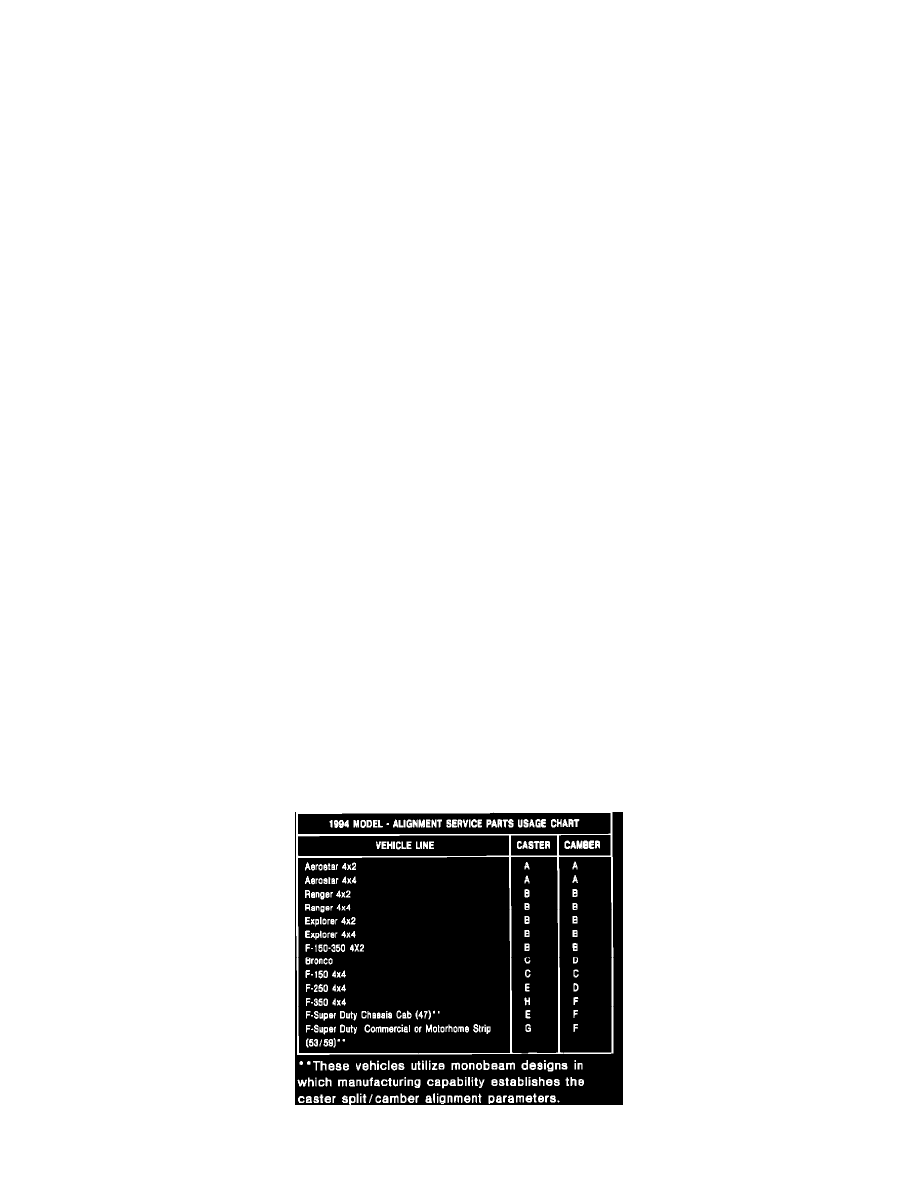Ranger 4WD V6-182 3.0L (1994)

REQUIRED CONDITIONS BEFORE CHECKING ALIGNMENT:
^
No driver and/or passenger
^
Full fluids
^
All tires set to specified air pressure
^
All tire sizes comparable to original equipment
^
Vehicle configured to normal operated condition (not to exceed max. front GAWR, max. rear GAWR and/or max. GVW.
DEFINITIONS
1.
Camber Average is defined as LH camber plus RH camber divided by 2 (LH CAMBER + RH CAMBER) / 2.
Vehicles set to this specification, as measured with the vehicle loaded to normal loading conditions will result in optimum tire wear.
2.
Caster Average is defined as LH caster plus RH Caster divided by 2 (LH CASTER + RH CASTER) / 2.
These are NOT recommended values for settings. They are only maximum and minimum limitations. Vehicles outside these limits may exhibit the
following:
^
Vehicles which exceed the maximum caster value may result in shimmy concerns.
^
Vehicles operated below the minimum caster value may result in wander and poor steering returnability concerns.
3.
Camber Split is defined as LH camber minus RH camber (LH CAMBER - RH CAMBER)
4.
Caster Split is defined as LH caster minus RH Caster (LH CASTER - RH CASTER)
SPECIAL NOTE - CASTER/CAMBER OUT OF RANGE
Vehicles with average caster and/or camber significantly out of specified ranges may have a ride height out of normal operating range. Normal service
procedures may not provide adequate adjustment to bring the alignment to the preferred specification. If ride height appears to be an issue, investigate as
follows:
^
Front ride height can be below specification if the front loading exceeds the rated capacity listed on the certification label. Weigh the front end and
compare to the certification label to determine if an overload condition exists. If overloaded, adjust weight to bring vehicle back into compliance
with the published weight limits, or rerate the front suspension within the guidelines of the 1994 Body Builders Layout Book.
^
Front ride height can be abnormally high on lightly loaded vehicles equipped with heavy duty front suspension options or maximum FGAWR
options. Compare the ride height of the frame-to-ground guidelines at the wheel centers published in the 1994 Body Builder's Layout Book, and
adjust loading as required or revise front suspension rating within the guidelines in the 1994 Body Builder's Layout Book.
